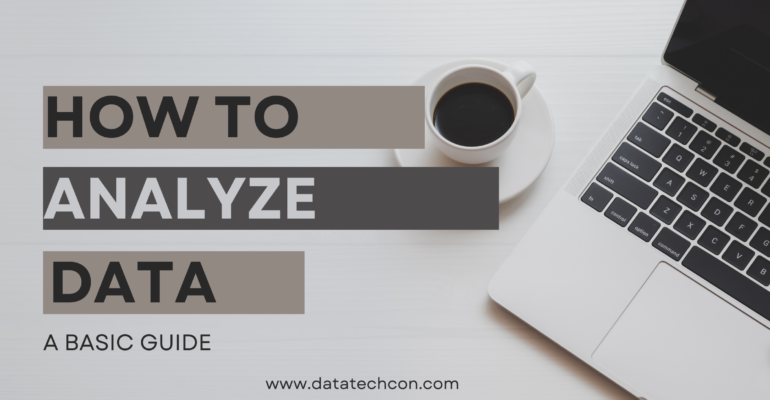How To Analyze Data: A Basic Guide
Welcome to the field of data analytics! Whether you’re a beginner just starting out or a seasoned pro looking to brush up on your skills, this guide is here to help.
Data analysis can seem intimidating at first, but with the right tools and techniques, you’ll be slicing and dicing data like a pro in no time.
In this post, we’ll be covering all the basics of data analysis, from collecting and cleaning data to visualizing and interpreting results. So grab a notebook and let’s dive in!
Introduction To Data Analysis
The process of gaining meaning from data is known as data analysis. There are several techniques to accomplish this, but data set analysis is the most popular.
Data analysis is crucial because it enables companies to make wise operational decisions. Your company can better serve customers and utilize its resources by comprehending how your data is spread.
Collecting and cleaning data, examining and visualizing data, and understanding and conveying conclusions are all steps in the process of data analysis.
Data collection and cleaning come first. Next, you’ll explore and visualize the data to gain insights and pinpoint areas that require more research. In order to share insights and make data-driven decisions, you’ll interpret the results and explain them in the end.
In order to maximize the use of your data, it is essential to comprehend each stage and how it relates to the next.
Collecting and Cleaning Data
Data can be located and obtained through a variety of techniques, including open data portals, APIs, web scraping, buying data from suppliers, and running surveys or experiments to gather your own data.
The most crucial thing to remember is to use initiative and imagination, as well as to assess the accuracy and applicability of the data before incorporating it into your research.
In order to properly analyze data, it is crucial to clean and prepare the data. This process involves best practices like removing duplicate records, handling missing or null values, fixing errors, standardizing data format and units, ensuring data consistency, and removing unused columns or features.
Your data will be more accurate, thorough, and prepared for analysis thanks to this approach.
Exploring and Visualizing Data
To summarize and comprehend data as a data analyst, you would have to employ methods like descriptive statistics, data visualization, correlation analysis, and regression analysis.
These methods can help you recognize patterns and trends, comprehend the distribution of data, and forecast variables depending on other variables.
In order to effectively explain your findings after conducting data analysis, it’s crucial to first create clear visuals.
The most used programs for making visualizations are Excel, Tableau, and R. Simple visualizations can be done well using Excel, dynamic dashboards and charts can be made with Tableau, and a broad variety of visualization tools may be used with R.
The objective is to ensure that visualizations successfully convey the idea while being straightforward and simple to grasp.
Interpreting and Communicating Results
As a data analyst, it is critical to draw meaningful conclusions from data and starting with a clear research question or hypothesis can help guide your analysis and ensure that you’re focusing on the most important aspects of the data.
Furthermore, it is critical to use appropriate statistical tests and techniques to back up your conclusions, as well as to be aware of any potential biases or limitations in your data.
Finally, whether through a presentation or a written report, it is critical to effectively communicate your findings to others.
Another essential component of data analysis is effectively conveying your findings to others.
This entails presenting information in a simple and understandable manner, being able to communicate the significance and context of your findings to non-technical audiences, emphasizing the most intriguing or unexpected aspects of your findings, and being ready to respond to queries and address any issues that might come up during the presentation or discussion.
Conclusion
And there you have it, a basic guide to data analysis! Remember, data analysis is an ongoing process and the more you practice, the more you’ll be able to do.
Don’t be afraid to experiment and try out new tools and techniques. With time and practice, you’ll be able to take on more complex data sets and uncover new insights. Happy analyzing!


